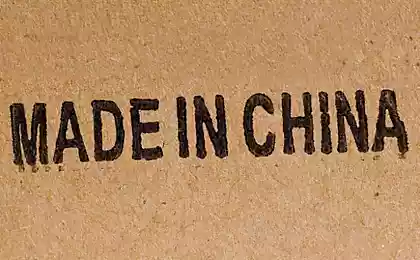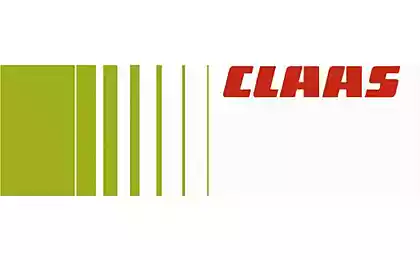1470
Gidrointegrator Lukyanov
Computer, but not electric.
Gidrointegrator - hydraulic computer:
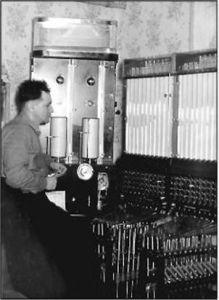
The water flows from one to another glass tube, allows to solve differential equations with partial derivatives.
It was in the period of industrialization of the USSR, when freshly engineer Vladimir Lukyanov was to build a railway and ran into the problem of low quality concrete (at hardening concrete cracked). Lukyanov suggested that this is due to thermal stress and synthesis of existing theoretical developments. The process is described by differential equations, which require lengthy calculations, but Lukyanov saw most importantly - an analogy between the equations describing the heat transfer, and the equations describing fluid flow. Ie the first process can be modeled by a second.
A few years later Lukyanov creates tools for the solution of this very specific problem - analysis of changes in temperature in the concrete, depending on its composition, molding technology and environmental conditions.
Example solved problem h5> Heat transfer in unsteady conditions - cooling multilayer planar wall.
The fate of the project h5> The point in this, oddly enough, not the end. Engineer VS Lukyanov eventually became a doctor of technical sciences, and received the Stalin Prize. He designed a three-dimensional and two-dimensional hydraulic integrators as standard building blocks that can link depending on the task. Moreover - gidrointegratory were put into mass production. It is with them, in particular, was calculated using the projects of the Karakum Canal, the Baikal-Amur Railway, the world's first hydroelectric power plant of precast concrete - Saratov. They were used in geology (the movement of groundwater), metallurgy (cooling of castings), rocket and others.
Gidrointegrator - hydraulic computer:

The water flows from one to another glass tube, allows to solve differential equations with partial derivatives.
It was in the period of industrialization of the USSR, when freshly engineer Vladimir Lukyanov was to build a railway and ran into the problem of low quality concrete (at hardening concrete cracked). Lukyanov suggested that this is due to thermal stress and synthesis of existing theoretical developments. The process is described by differential equations, which require lengthy calculations, but Lukyanov saw most importantly - an analogy between the equations describing the heat transfer, and the equations describing fluid flow. Ie the first process can be modeled by a second.
A few years later Lukyanov creates tools for the solution of this very specific problem - analysis of changes in temperature in the concrete, depending on its composition, molding technology and environmental conditions.
Example solved problem h5> Heat transfer in unsteady conditions - cooling multilayer planar wall.
The model is assembled from a number of cylindrical vessels connected in series between a calibrated tube. Each of the vessels mimics the heat content of the layer of the wall, which divided the test enclosure. Vessels are filled with water up to levels corresponding to the initial temperature of each of the layers, after which the valves are opened, and the water begins to flow out of the vessels. Changing water levels in the blood vessels at the same time will be the same temperature change in the respective layers of the wall as it cools.
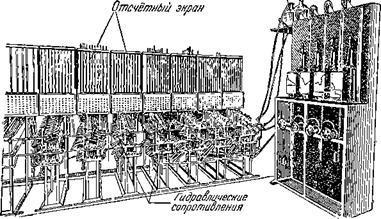
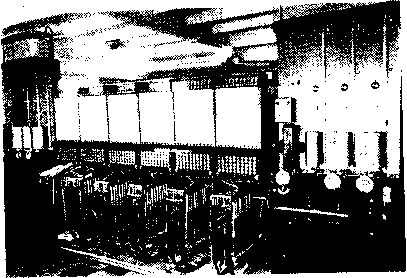
Used the following analogy with thermal parameters studied walling:
a) water levels in vessels in cm correspond to temperature differences and air layers in degrees;
b) the cross-sectional area in cm vascular layers correspond to the heat capacity in kcal / degree;
c) water in the amount of vessels in cm corresponds enthalpy layers kcal;
g) hydraulic resistance tubes in min / cm (?) connecting the vessels together, meet the thermal resistance of the layers in the hail-h / kcal;
d) flow resistance in the outlet tube corresponds to the resistance heat transmission from the wall surface to the air in the hail-h / kcal;
e) the water flow in cm / min corresponds to the heat flow in kcal / h.
Time scale t. E. The ratio of the actual duration of the heat transfer process in hours for processing time at gidrointegratore in minutes, equal to the product of the specific heat ratio in cross-sectional area of the vessel by the ratio of the thermal resistance to the hydraulic resistance.
To be able to fix the temperature (water levels in the blood vessels) at certain times gidrointegrator had a special device at the same time covers all the valves between the vessels. At this point, it was necessary to note the graph paper, located behind the tubes, the water levels in piezometers. Then, the valve opens, and so on until the next measurement. A resulting curve is a solution.
In other words, the integrator allows us to replace the process, direct observation of which is difficult in a similar, but more intuitive process. It is important that both the process described by the same mathematical relations.
The fate of the project h5> The point in this, oddly enough, not the end. Engineer VS Lukyanov eventually became a doctor of technical sciences, and received the Stalin Prize. He designed a three-dimensional and two-dimensional hydraulic integrators as standard building blocks that can link depending on the task. Moreover - gidrointegratory were put into mass production. It is with them, in particular, was calculated using the projects of the Karakum Canal, the Baikal-Amur Railway, the world's first hydroelectric power plant of precast concrete - Saratov. They were used in geology (the movement of groundwater), metallurgy (cooling of castings), rocket and others.
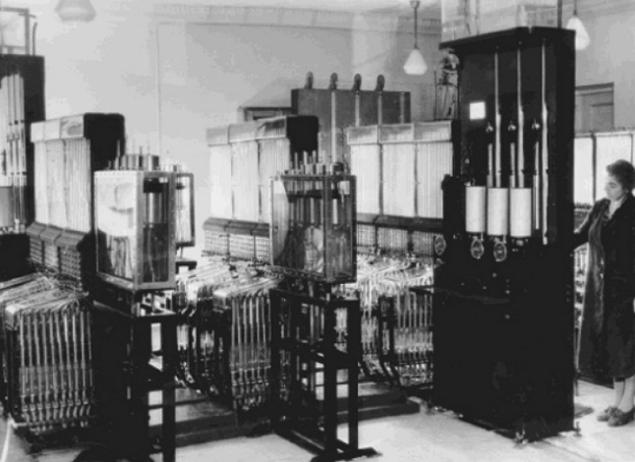
Two gidrointegratora Lukyanov represented in the collection of analog machines Moscow Polytechnical Museum. One of them:

1. article in "Science and Life» .
2. KF Fokin Thermal Engineering enclosing parts of the buildings .
Source: habrahabr.ru/post/228283/
Radioisotope thermoelectric generators for Cassini
Google is planning to lay its own fiber optic cable along the bottom of the Pacific Ocean















